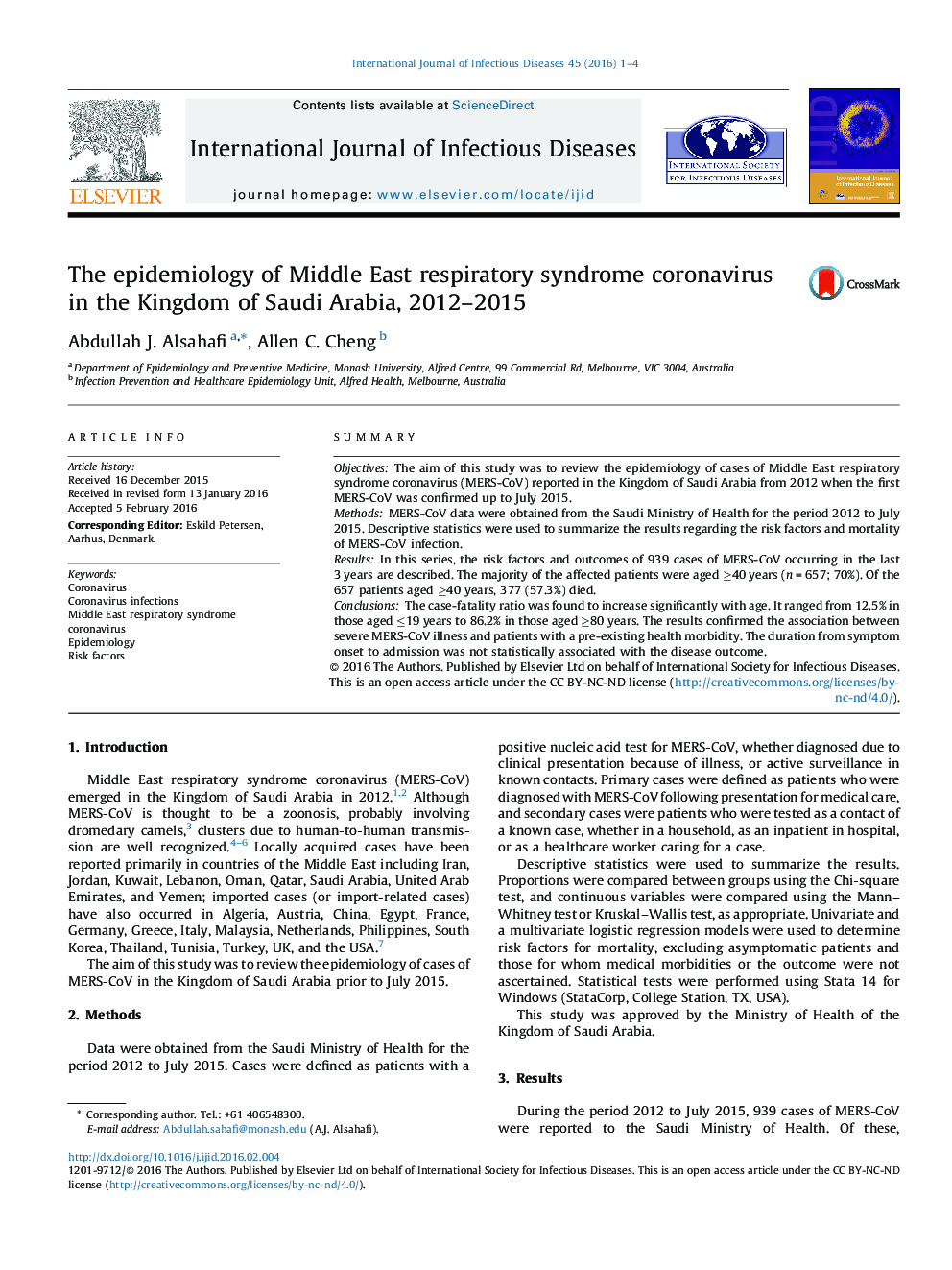| Article ID | Journal | Published Year | Pages | File Type |
|---|---|---|---|---|
| 3361746 | International Journal of Infectious Diseases | 2016 | 4 Pages |
•Patients with a primary infection, those of older age, and cases with comorbidities were more severely unwell.•Early admission of Middle East respiratory syndrome coronavirus (MERS-CoV) cases did not improve the disease outcome.•Healthcare workers and household contacts had a lower mortality.•The high prevalence of renal disease in inpatients reflects the nosocomial outbreaks.•The clinical significance of asymptomatic infection is not yet known.
SummaryObjectivesThe aim of this study was to review the epidemiology of cases of Middle East respiratory syndrome coronavirus (MERS-CoV) reported in the Kingdom of Saudi Arabia from 2012 when the first MERS-CoV was confirmed up to July 2015.MethodsMERS-CoV data were obtained from the Saudi Ministry of Health for the period 2012 to July 2015. Descriptive statistics were used to summarize the results regarding the risk factors and mortality of MERS-CoV infection.ResultsIn this series, the risk factors and outcomes of 939 cases of MERS-CoV occurring in the last 3 years are described. The majority of the affected patients were aged ≥40 years (n = 657; 70%). Of the 657 patients aged ≥40 years, 377 (57.3%) died.ConclusionsThe case-fatality ratio was found to increase significantly with age. It ranged from 12.5% in those aged ≤19 years to 86.2% in those aged ≥80 years. The results confirmed the association between severe MERS-CoV illness and patients with a pre-existing health morbidity. The duration from symptom onset to admission was not statistically associated with the disease outcome.
